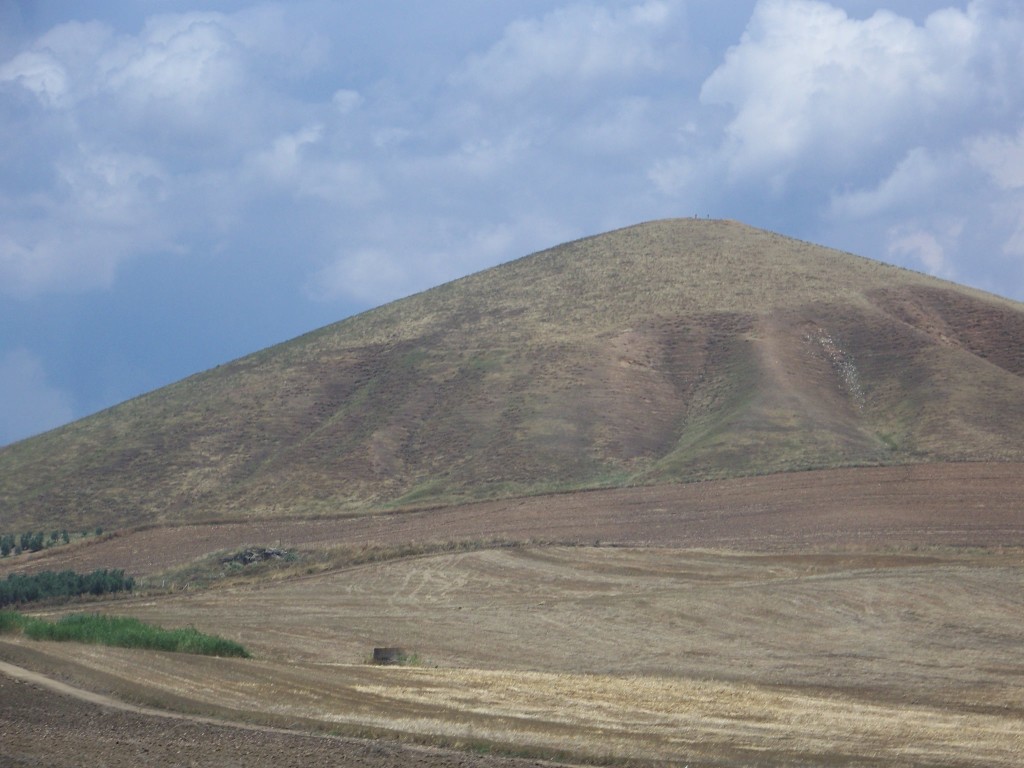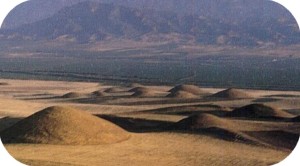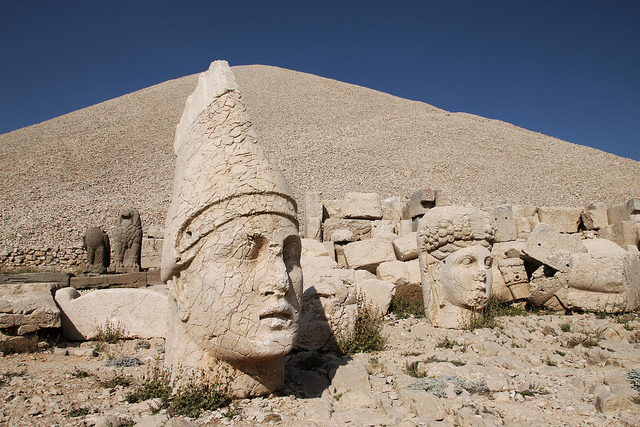It isn’t much of a stretch to call man-made mounds pyramids. They are tombs (whether actual or pretend) of a massive scale that have not been replicated in modern times. Sure, they aren’t pyramidal in shape, but why would they be? Even today we tend to create buildings in different shapes and styles, even when they serve the same purpose.
The pyramids of China are earthen mounds in pyramidal shapes. Silbury Hill in England is an earthen mound that is conical, and 40m high.
Less well known are the tumuli of Turkey:
The site is called “Bin Tepeler” (a thousand mounds in Turkish) and it is in the northwest of Salihli district of Manisa province. Bin Tepeler is a Lydian necropolis that dates back to 7th and 6th centuries BC. These mounds are called, “the pyramids of Anatolia,” as a giant specimen among them is 355 metres in diameter, 1115 metres in perimeter and 69 metres high. According to Herodotus, this giant tumulus belongs to the famous Lydian King Alyattes II who ruled between 619–560 BC. [Source – Wikipedia]
Marble burial chamber within! And it isn’t the only mound in the district…
Not to forget the unique Mt Nemrut, Kâhta – a natural mountain (2150 metres above sea level), with a 50 metre artificial mound built on top. If pyramids are meant to represent mountains, the builders of this one have gone a step further by placing it on top of a real mountain. [http://survive2012.com/middle-east-pyramids/]



